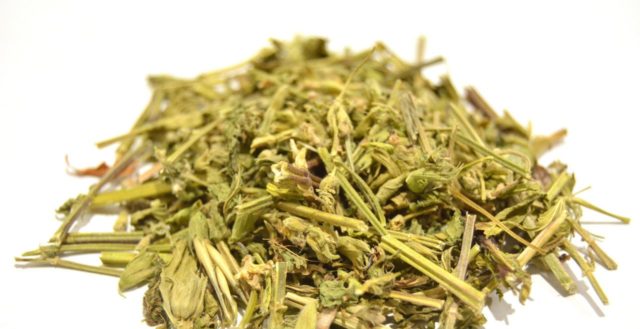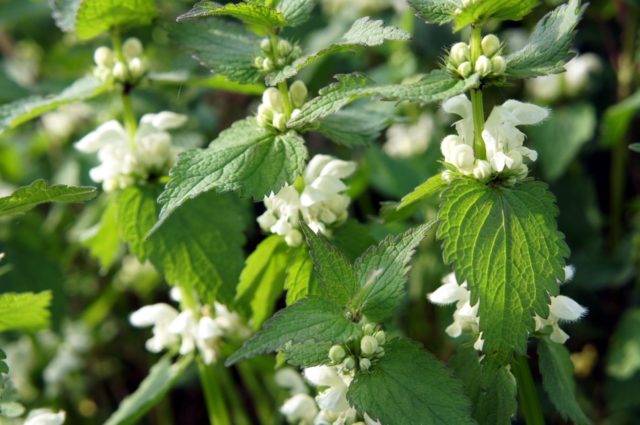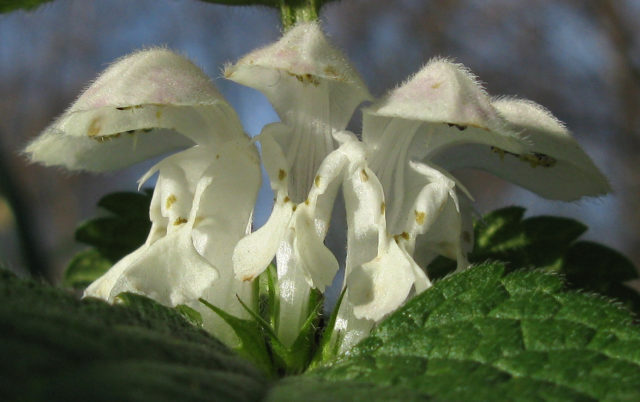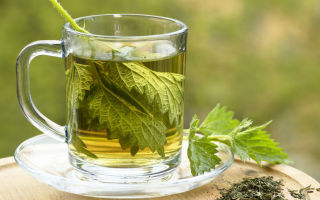Content
Traditional healers for medicinal purposes often use white lamb. The plant is better known as deaf nettle. All medicinal properties and contraindications for white lamb should be clarified before starting herbal medicine. Healing infusions, decoctions are made from flowers and leaves of the plant. Young shoots can be used in cooking. The leaves taste like spinach, so they are added to soups and salads.
The chemical composition of the herb lamb
White nettle is a perennial plant. It helps in the fight against many diseases. The effect of lamb's on the body is due to the inclusion in the composition of many useful substances.
The plant contains:
- organic acids;
- carotene;
- vitamin C;
- alkaloids;
- sucrose;
- flavonoids;
- saponins;
- essential oils;
- tannins;
- tannins;
- potassium salts.
The flowers of deaf nettle contain large quantities of mucous substances. Lamb leaves are considered to be a good source of carotene, and roots - glycosides. The maximum concentration of nutrients is found in flowers. But due to their small size, it is difficult to assemble them separately. Therefore, leaves are also used to prepare medicinal drinks.
Useful properties of lamb
Various parts of the white nettle have a healing effect. Preparations based on this plant have the following effect on the body:
- anti-inflammatory;
- astringent;
- pain reliever;
- hemostatic;
- choleretic;
- wound healing;
- anticonvulsant.
Infusions and decoctions are recommended for women. The prepared drinks tone the uterus, increase the contractility of smooth muscle fibers. It is advised to use them with leucorrhoea. But the remedy will be effective only if the discharge is not associated with the development of infectious processes in the uterus or appendages.
The medicinal properties of the herb are used to treat diseases of the genitourinary system in women and men. The healing effect is achieved through the anti-inflammatory and astringent effects of the plant. Decoctions are recommended for cystitis, pyelitis. White nettle normalizes the condition in patients with diarrhea, including in cases of dysentery.
Under the influence of saponites and mucous substances that are part of the flowers, the well-being of people suffering from prolonged cough, bronchitis, tracheitis and other colds improves. Under the influence of these substances in the respiratory tract, sputum liquefies. Mucus begins to be removed more intensively.

White lamb is used for neuroses, insomnia, neurasthenia. The plant has a mild sedative effect. But thanks to the simultaneous tonic effect, white nettle does not impair concentration, does not provoke the appearance of drowsiness, lethargy.
Fresh leaves are used for external use.They are pre-crushed to the state of gruel and applied to inflamed areas, abscesses, boils, wounds. The affected areas can be wiped with fresh juice.
For external use, make a concentrated infusion. Under the influence of the substances contained in it, it is possible to eliminate the symptoms of hemorrhoids. Baths with infusion have a healing effect. But white is used not only for hemorrhoids, the infusion is used to rinse the throat and mouth with angina.
In combination with other plants, deaf nettle is used to treat anemia, diseases of internal organs. It helps to relieve the condition of patients with allergies.
Harm of the grass
White nettle belongs to non-toxic and non-poisonous plants, therefore, when using it, problems are practically not encountered. But excessive enthusiasm for infusions and decoctions of this herb can lead to an increase in the blood coagulation process. This increases the risk of blood clots forming in the blood vessels.
When treating a lamb, you need to monitor the level of blood pressure. In some patients, it may decrease. If previously a person did not have hypertension, then such an effect of the plant leads to a deterioration in well-being.
Contraindications to clear
It is forbidden to drink decoctions, infusions and teas from dead nettle for pregnant women. These drinks provoke contraction of the uterine muscles and can lead to spontaneous miscarriage or the onset of premature labor.
Caution should be exercised by people who have been diagnosed with one of the following diseases:
- hypotension;
- thrombophlebitis;
- thrombosis;
- phlebeurysm.
White ash can provoke an exacerbation of existing problems.
Rules for the use of deaf nettles
Herbalists advise you to adhere to the recommended doses of any herbal remedies. It is undesirable to use them for a long time without interruption.
Healers advise to drink infusions of 50-100 ml up to 4 times a day. There are no restrictions for external use. But it is better to make lotions, lubricate problem areas with plant juice up to 2 times a day. Broths from yarnotka are used for external use, rinsing, baths.

The use of white lamina in folk medicine
Herbalists advise taking infusions, teas from deaf nettle for many diseases. They are indicated for catarrh of the respiratory tract, a feeling of heaviness in the abdomen, bloating. The healing drink normalizes the functioning of the organs of the gastrointestinal tract. Due to the combination of astringent and anti-inflammatory effects, it improves the condition of patients with gastrointestinal ulcers.
It is also recommended to use white ash for patients who have:
- nervous exhaustion;
- overexcitation;
- pulmonary or uterine bleeding;
- jaundice;
- scrofula;
- diseases of the kidneys, spleen, urinary tract.
To prepare the infusion, 1 tbsp is enough. l. of dried raw materials, pour a glass of boiling water. You can take 300-500 ml per day, divided into 4-5 doses.
Previously, white lamb was used as the main remedy for relieving cystitis symptoms.
The filtered and cooled decoction of flowers and leaves is used for external use. They can wash burns, ulcers, wounds. Lotions are made from it to accelerate the healing of damaged skin. The treatment with an infusion of lamina has a positive effect on abscesses, furunculosis, itchy rash.
Even in the absence of health problems, fresh leaves are recommended to be added to food by fans of traditional methods of treatment. They are used in the preparation of salads, soups, mashed potatoes.They have a positive effect on the work of the digestive and respiratory systems, saturate the body with the necessary nutrients.
Collection and storage rules
When planning to use the lamb for medicinal purposes, collect the tops of the stems. It is best to harvest raw materials during the flowering period, it can last all summer. Cut off in the first month of summer, the upper parts of the plant by the beginning of autumn grow back and begin to bloom.
When collecting, it should be borne in mind that the maximum concentration of nutrients in flowers. Therefore, green shoots can be omitted. When preparing raw materials for home use, it is advisable to simply pluck flower corollas.
The collected white lamb should be dried not in direct sunlight, but in a shaded room. For these purposes, attics, awnings and other well-ventilated rooms can be used. Also, white nettle is harvested in special dryers. The maximum permissible processing temperature is 35 ° C.
Raw materials should be stored in metal or glass jars with a tight-fitting lid for a year.
Photo of deaf nettle
When planning to harvest raw materials on your own, it is advisable to see what a white ash looks like. Attention should be paid to flowering plant species, because only flowers are of the greatest value.


Conclusion
When choosing means for phytotherapy, one should take into account all the known medicinal properties and contraindications to white lamb. It is used as an anti-inflammatory, astringent, anesthetic, sedative. Take infusions, decoctions should be in diseases of the digestive system, urinary, respiratory systems. White nettle has a positive effect on the condition of damaged skin.

